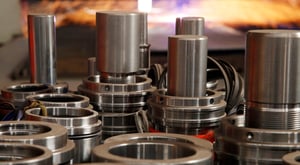Embodied carbon often refers to the total greenhouse gas emissions generated during the a lifecycle of a product, from the extraction of raw materials, transportation of the materials to manufacturing the final product.
In the quest for sustainability, reducing embodied carbon has emerged as a crucial tactic. This carbon, hidden within the very fabric of products we use daily, significantly contributes to the overall carbon emissions. By understanding what embodied carbon is and how to reduce it, we can make significant strides towards achieving net-zero carbon emissions.
Understand Embodied Carbon
Embodied carbon often refers to the total greenhouse gas emissions generated during the a lifecycle of a product, from the extraction of raw materials, transportation of the materials to manufacturing the final product. This carbon is ’embodied’ within the product, making it a silent contributor to global warming. People occasionally use the term embodied carbon to refer to the cradle-to-gate emissions from the production of the product (e.g., a building).
Contrary to popular belief, embodied carbon can sometimes exceed operational carbon emissions during a product’s lifetime. For instance, in the construction industry, the embodied carbon in a building’s structure can account for up to 60% of its lifetime carbon footprint. Even more startling, when considering the replacement of a product within its parent system’s full lifespan, embodied carbon can account for as much as 90% of total GHG emissions.
The Importance of Embodied Carbon Reduction
Embodied carbon reduction is not only an environmental imperative but also a business strategy. By lowering their embodied carbon, companies can decrease their total carbon footprint, contributing to the global fight against climate change. Reducing embodied carbon emissions demonstrates the ambition to manufacture innovate products, suited for the future as natural resources become depleted.
Moreover, a lower embodied carbon footprint can also yield financial rewards by reducing material costs and enhancing brand reputation. Businesses can gain a competitive edge by accurately calculating the emissions from the products they sell. This transparency eliminates the need for the less reliable spend-based method in determining a company’s total carbon footprint. Thus, reducing a product’s embodied carbon directly impacts a client’s emissions from Scope 3, Category 1, Purchased Goods and Services, making it an attractive proposition for environmentally conscious consumers.
The Complex Process of Reducing Embodied Carbon
Embodied carbon reduction is an intricate task. It involves assessing the emissions from various stages of a product’s lifecycle. While the process may seem daunting, businesses can take several concrete steps to lower their embodied carbon.
- Adhere to the Carbon Hierarchy: This principle prioritises actions from high to low – Avoid, Reduce, Replace, Compensate and Remove.
- Prefer Low-carbon Materials: Opt for materials with lower embodied carbon, like recycled materials or sustainable alternatives.
- Minimise Waste: Curbing waste during the manufacturing process is crucial, as waste materials add to the embodied carbon.
- Streamline Transportation: Efficient transportation methods, like using low-emission vehicles or sourcing materials locally, can significantly reduce embodied carbon.
- Design for Deconstruction: By designing products and buildings for easy disassembly and reuse, the need for new materials reduces, lowering embodied carbon.
- Measure and Monitor: Regular measurement, tracking and reviewing of embodied carbon can help businesses monitor their progress and make continuous improvements.
However, given the complexity of the task, it is advisable for businesses to seek expert guidance when calculating their product’s embodied carbon.
Embodied Carbon Assessments: A Detailed Approach
Embodied carbon assessments provide a comprehensive approach to understanding and reducing a product’s embodied carbon. These assessments delve into the product’s lifecycle from cradle to gate, examining each stage for potential carbon reductions. By engaging with these assessments, businesses can gain a thorough understanding of their product’s embodied carbon and devise effective strategies for reduction.
The Path to Net Zero
While reducing operational carbon emissions is crucial, it’s equally important to consider the embodied carbon in products and materials. By taking proactive steps to reduce embodied carbon, businesses can not only lower their environmental impact but also enhance their bottom line.
Undoubtedly, the task is challenging. But remember, every step towards reducing embodied carbon is a step towards a more sustainable future. And as we collectively strive towards net-zero emissions, our efforts to reduce embodied carbon will play an increasingly important role.
If you’re seeking help in understanding and reducing your product’s embodied carbon, consult the experts. With a proven track record in embodied carbon reduction, they can guide you through the process, helping you make a tangible difference in the fight against climate change. Don’t hesitate; reach out today and start your journey towards a more sustainable future.
LEARN MORE ABOUT THE EMBODIED CARBON WITHIN YOUR PRODUCT
Get in touch with our experts today to calculate the embodied carbon within your product(s).



